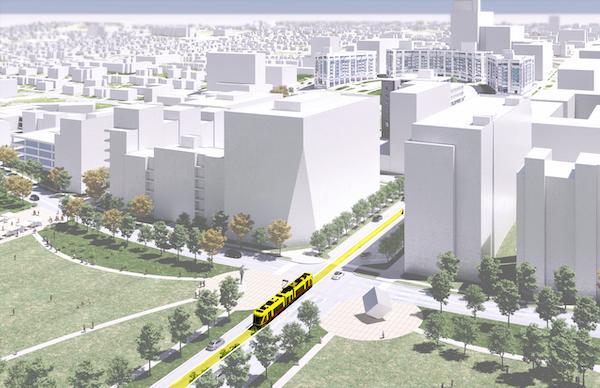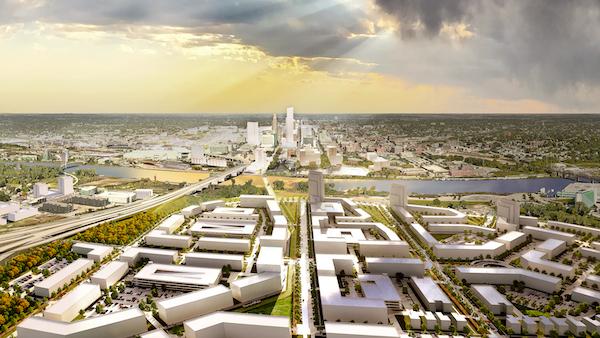GREATER OMAHA'S URBAN CORE
A strategic plan for the region's urban coreto adapt, change and grow.
A vision for Omaha’s heart and soul.
Cities never stand still. They are either growing and moving forward, or they are declining and falling behind. To reach our potential, Omaha must reaffirm and reinforce the urban core’s historic role as the cultural, entertainment, residential and employment heart of the region.
This long-range vision for Omaha connects communities while supporting neighborhoods in and surrounding the core. It looks to create jobs and provide living opportunities for all ages and incomes. It attracts visitors, inspires investment and enhances the quality of life for everyone in the region.
This is not a short-term fix, but a long-term plan to help Omaha become a model metropolitan area that others aspire to.
Focused on a Future For All Of Us
We’ve set ambitious goals and a powerful vision for a transformed urban core in Omaha. This strategic plan is a blueprint for a collection of investments and projects that will help accomplish major goals for a forward-looking metro.
Increase Density
This plan seeks to attract 30,000 residents and 30,000 jobs to the urban core over the next 20 years.
Total Mobility System
Anchored by the modern streetcar project, this plan looks to simplify how people move in, out and around the urban core. Check out ConnectGO for more information on our transportation initiative.
Urban Form
Reclaiming land for development creates seamless, active corridors from one neighborhood to the next.
Anchor Projects
The strategic plan target area is anchored on both ends by two already announced projects. To the east is the RiverFront redevelopment and Mutual of Omaha headquarters. To the west is UNMC and their ongoing NExT Project. Between them is the former Civic Auditorium site, ready for redevelopment with a city-selected preferred developer. With these three transformational investments leading the way, the urban core will continue to grow up throughout the corridor.
Modern Streetcar
A total mobility system is essential to a high functioning urban core. In order to help achieve this, an initial streetcar route is proposed for the Farnam Street corridor, from 10th Street west to UNMC. This 3-mile route will have 13 stops along its route, 10-minute peak frequency, and be fare free.


Dodge Park Redevelopment
Dodge Park is a City-owned golf course located on the east side of the Missouri River in Council Bluffs, directly across the river from Downtown Omaha. With the total number of rounds decreasing at Dodge Park golf course, the time is right to consider an alternative use for the site. A preferred option would be to construct a new walkable urban neighborhood. A neighborhood on this site would be close to jobs, accessible to cultural amenities and embedded in nature. A pedestrian-oriented, mixed-use neighborhood would provide the lifestyle options that would allow the urban core to attract and retain talent at a national level.
I-480 LID
I-480 acts as a barrier between the adjacent neighborhoods – limiting bicycle and pedestrian crossings and negatively impacting development potential. With the Douglas, Farnam, and Harney Street bridges nearing the end of their lifespans, the time is right to consider alternatives to bridge replacement. A preferred alternative would be the construction of a LID. The east-west and north-south street network could be reconnected, and public open space could be developed over the interstate.

How We Got Here.
The Chamber’s Urban Core Committee was formed in 2018 with the goal of maximizing the economic development and overall vitality of Greater Omaha’s urban center, including downtown and midtown Omaha and the western edge of Council Bluffs. Since its founding, the Urban Core Committee has overseen the commission of several impactful studies and the development of an Urban Core Strategic Plan.
With the completion of the strategic plan, the vision and goal-setting stages of the Urban Core Committee’s work has concluded, and we are preparing to embark on a path toward implementation. In fact, several projects envisioned in the strategic plan are already underway.
Governance Study
Methodology:
The study’s author interviewed numerous urban core stakeholders to identify what they saw as the need for the core and how an organization devoted to the core could help. The study looked at five successful downtown organizations in other cities as well as some similar models.
Residential Market Analysis
Methodology:
Study included stakeholder interviews and identified the number of potential households both currently within the Omaha area and those moving into the area that would be interested in an urban lifestyle. The study looked at income ranges, housing type preferences, and potential price ranges.
Retail Market Analysis
Methodology:
The study aimed to quantify the demand for a range of retail establishments within the core. It was initially completed prior to the onset of the Covid-19 pandemic in early 2020. As a result, it was felt that the initial report did not accurately reflect the urban core retail market in a post-pandemic environment. The report was updated in May 2021.






